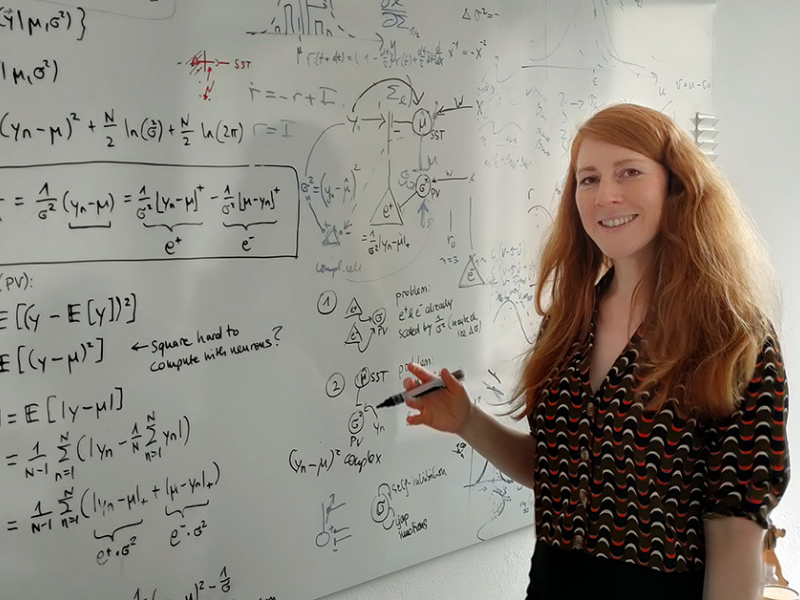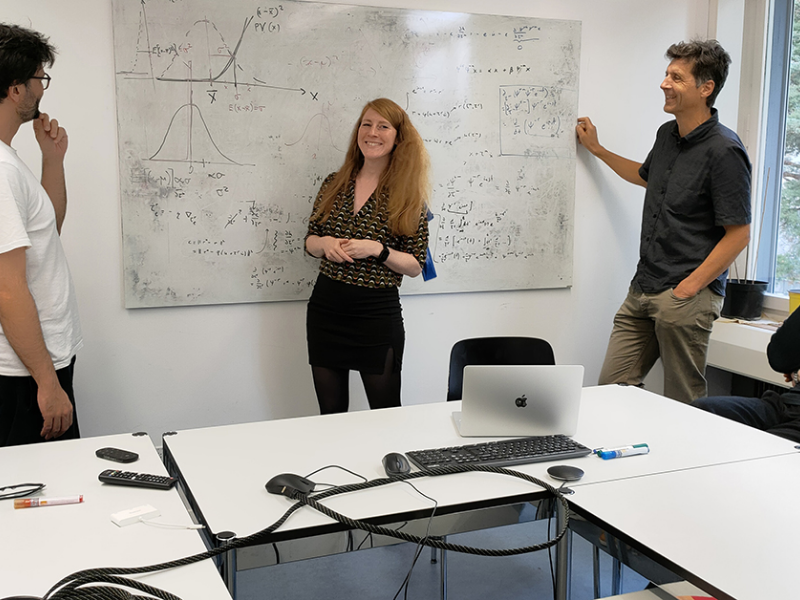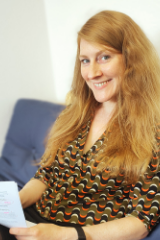Neuroscience
Understanding how the brain learns
Katharina Wilmes is fascinated by the question how humans learn in an uncertain world. To find out, she is developing special neuroscientific models at the Institute of Physiology at the University of Bern.

Katharina Wilmes, what are you currently working on?
I am interested in how we learn from sensory experiences.
Imagine waiting for a bus. You expect it to arrive at an approximate time. If it is a few minutes late, that is within your expectation. However, if the bus is 20 minutes late one day, this is very unexpected and could indicate that the bus timetable has been changed. You adjust your expectations based on this experience.
In technical jargon, we would say: due to a prediction error, you learn that you need to adjust your model of the world.
And what would you like to find out?We currently assume that people learn by making predictions – for example about what they will see and experience – and then compare these predictions with their actual experiences. If prediction and experience differ, we learn. In other words: we learn from prediction errors. But how these prediction errors are represented physiologically in the brain is still unclear.
How do you want to solve this puzzle?I'm working on a mathematical theory of how the brain deals with prediction errors. We simulate the brain’s neuronal network on the computer and compare its activity with results from experiments, which then feed back into our theory.
In the future, I would like to investigate how changes in neural circuits at the cellular level affect learning. This would enable us to better understand psychiatric disorders, such as the autism spectrum, which includes a difficulty dealing with uncertainty. Theoretical models could thus bridge the gap between behavioral and neuroscientific research.

How did you find your research topic?
I have always been interested in how the brain can learn. It is quite astonishing that it can change with every sensory experience. We humans are so flexible! Artificial neural networks do not reach this level of human flexibility. I want to find out how our brain does it!
Why did you choose to do your research at the University of Bern?I came to Bern because in this lab I have both the theoretical underpinnings and the direct connection to experimental neuroscience. Even though I arrived during the pandemic I have had a very nice start and could establish a good network with other postdocs – also through the Mittelbauvereinigung of the University.
Katharina Wilmes studied cognitive science and cognitive neuroscience and completed her doctorate at the Institute for Theoretical Biology at Humboldt University in Berlin. She then worked as a postdoctoral researcher at Imperial College London, UK. Since 2020, she has been a postdoctoral researcher at the Institute of Physiology at the University of Bern. Stories about research at the University of Bern and the people behind it – gripping, multimedia and free of charge.About the person

Subscribe to the uniAKTUELL newsletter
